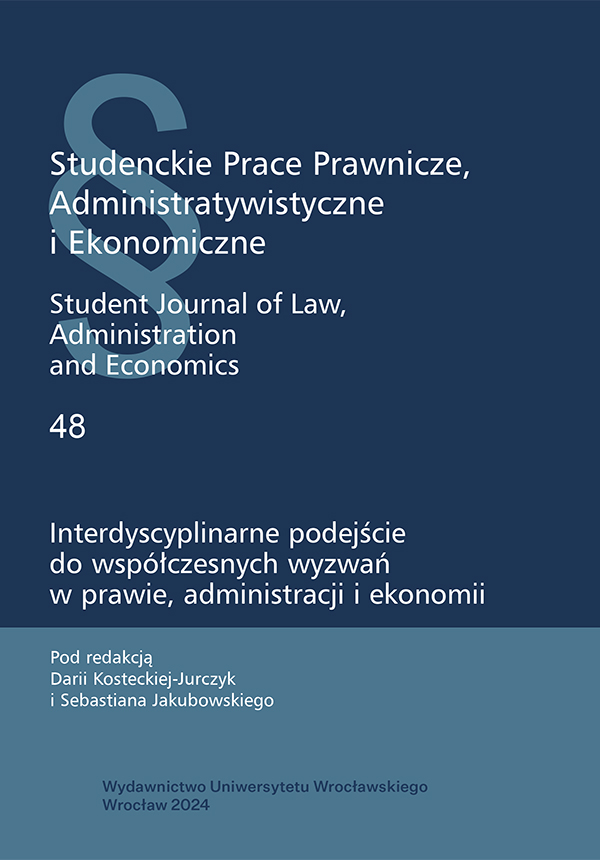

Articles

The aim of this article is to examine the effectivness of TikTok as a form of marketing communications among generation Z. The article was written on the basis of secondary research, that is the analysis of statistical data and literature on the subject. For the purposes of the work, primary research was also carried out, the aim of which was to analyze the effectiveness of TikTok as a marketing communication channel among young people. The research was carried out from the end of November to mid-December 2023. The responses of 347 respondents were obtained, and the collected results made it possible to formulate conclusions. The results suggest that free forms of advertising are more effective than their paid counterparts. 72% of respondents declared that they never made purchases due to the paid format of advertising on the TikTok platform. In the case of free forms of advertising, the percentage is 51.1% of respondents. This means that free forms of advertising are 20.9% more effective than paid forms. In addition, 26.2% of respondents believe that the advertisement displayed in the application definitely did not affect their purchases.
Ams Smart OOH, Generacja Z jest Out of Home, 2023, https://ams.com.pl/wp-content/uploads/2023/08/Generacja-Z-jest-Out-of-Home.pdf.
Araujo C.J., Perater K.A., Quicho A.M., Etrata A., Influence of tiktok video advertisements on generation z’s behavior and purchase intention, „International Journal of Social and Management Studies” 3, 2022 nr 2, s. 140–152.
Blythe J., Komunikacja marketingowa, przeł. G. Górska, Warszawa 2002.
Brejza K., TikTok jako współczesne źródło wiedzy, „Bibliotheca Nostra. Śląski kwartalnik naukowy” 2022, nr 2, s. 51–63.
Budna K., Czyrska A., Kiszkiel K., Krysztopowicz A., Zaremba I., TikTok jako kanał komunikacji marketingowej młodych ludzi, „Akademia Zarządzania” 7, 2023, nr 2, s. 85–99.
Demand Sage, 46 TikTok Statistics in 2023, https://www.demandsage.com/tiktok-user-statistics/.
Dolot A., The characteristics of Generation Z, „E-mentor” 74, 2018, nr 2, s. 44–50.
Doyle B., TikTok Statistics, Wallaroomedia, 13.11.2023, https://wallaroomedia.com/blog/social-media/tiktok-statistics/.
Duah C., The Influence of TikTok Videos on Consumer Behaviour, Helsinki 2023.
Francis T., Hoefel F., ‘True Gen’: Generation Z and its implications for companies, McKinsey & Company, 12.11.2018, https://www.mckinsey.com/industries/consumer-packaged-goods/our-insights/true-gen-generation-z-and-its-implications-for-companies#/.
Gesmundo M.A.G., Jordan M.D.S., Meridor W.H.D., Muyot D.V., Castano M.C.N., Bandojo A.J.P., TikTok as a platform for marketing campaigns: The effect of brand awareness and brand recall on the purchase intentions of millennials, „Journal of Business and Management Studies” 4, 2022, 2, s. 343–361.
Guarda T., Augusto M.F., Victor J.A., Mazón L.M., Lopes I., Oliveira P., The impact of tiktok on digital marketing, [w:] Marketing and Smart Technologies: Proceedings of ICMarkTech 2020, red. Á. Rocha, J.L. Reis, M.K. Peter, R. Cayolla, S. Loureiro, Z. Bogdanović, Singapore 2021, s. 35–44.
GUS, Społeczeństwo informacyjne w Polsce 2007–2011, Warszawa 2012, https://stat.gov.pl/cps/rde/xbcr/gus/nts_spolecz_inform_w_polsce_2007-2011.pdf.
GUS, Społeczeństwo informacyjne w Polsce w 2022 roku, Warszawa-Szczecin 2022, https://stat.gov.pl/download/gfx/portalinformacyjny/pl/defaultaktualnosci/5497/1/16/1/si_2022_003.pdf.
Howarth J., TikTok User Age, Gender, & Demographics, Exploding Topics, 20.11.2023, https://explodingtopics.com/blog/tiktok-demographics.
Lanier K., 5 things HR professionals need to know about generation Z: Thought leaders share their views on the HR profession and its direction for the future, „Strategic HR Review” 16, 2017, nr 6, s. 288–290.
Ma Y., Hu Y., Business model innovation and experimentation in transforming economies: Byte-Dance and TikTok, „Management and Organization Review” 17, 2021, nr 2, s. 382–388.
Martini L.K.B., Suardhika I.N., Dewi L.K.C., TikTok as a promotional media to influence consumer purchase decisions, „Jurnal Aplikasi Manajemen” 20, 2022, nr 1, s. 170–180.
Mou J.B., Study on Social Media Marketing Campaign Strategy — TikTok and Instagram, Doctoral dissertation, Massachusetts Institute of Technology, Cambridge 2020.
NASK, Nastolatki 3.0. Raport z ogólnopolskiego badania uczniów i rodziców, red. R. Lange, Warszawa 2023, https://www.nask.pl/download/30/4830/ThinkstatRAPORTnastolatki-30ONLINE.pdf.
Pieter G.M., Massie J.D., Saerang R.T., Exploring the effectiveness of using Tik Tok as a media for promotion: A case study of youth intention to buy products, „Jurnal EMBA: Jurnal Riset Ekonomi, Manajemen, Bisnis dan Akuntansi” 9, 2021, nr 4, s. 11–20.
Sladek S., Grabinger A., Gen Z: Introducing the First Generation of the 21st Century Has Arrived, XYZ University 2014.
Stachowiak-Krzyżan M., Media społecznościowe jako źródło informacji o uczelniach wyższych wśród kandydatów na studia, „Marketing Instytucji Naukowych i Badawczych” 2019, nr 4, s. 67–88.
Sudomir B., Młode pokolenie w mediach społecznościowych, [w:] Wybrane problemy zarządzania, red. A. Sawicki, Pelplin 2020, s. 96–109.
Tabassum S., Khwaja M.G., Zaman U., Can narrative advertisement and eWOM influence generation Z purchase intentions?, „Information” 11, 2020, nr 12, s. 1–16.
Tereszkiewicz A., TikTok: przegląd badań naukowych, „Media i Społeczeństwo” 2022, nr 16, s. 211–231.
Wiktor J.W. Modele komunikacji marketingowej, „Zeszyty Naukowe Akademii Ekonomicznej w Krakowie” 602, 2002, s. 115–124.
Żarczyńska-Dobiesz A., Chomątowska B., Pokolenie „Z” na rynku pracy. Wyzwania dla zarządzania zasobami ludzkimi, [w:] Sukces w zarządzaniu kadrami. Różnorodność w zarządzaniu kapitałem ludzkim — podejścia, metody, narzędzia. Problemy zarządczo-psychologiczne, red. M. Stor, A. Fornalczyk, Wrocław 2014, s. 405–415.